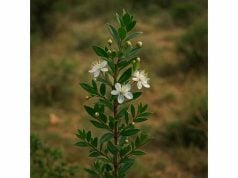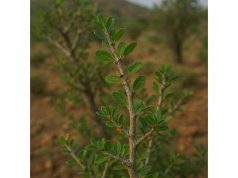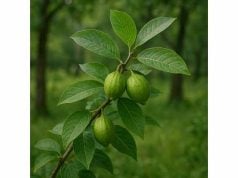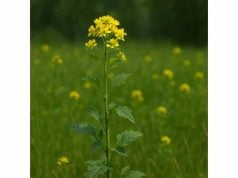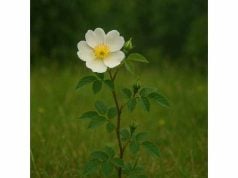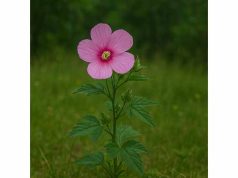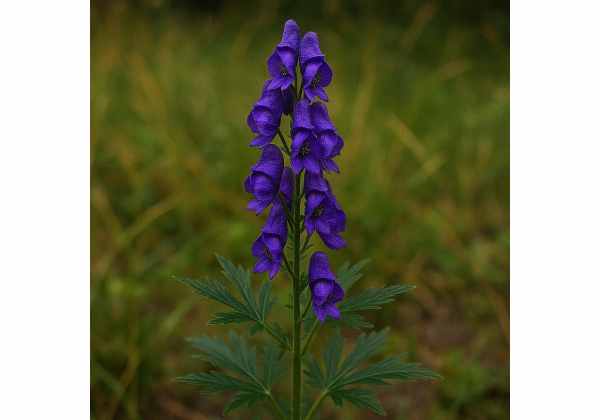
Monkshood, also known as Aconitum, is a striking yet enigmatic herb renowned for its potent therapeutic properties and complex chemical profile. In this guide, we explore its historical uses, unique active compounds, and impressive health benefits, offering an in-depth look at its botanical characteristics, traditional applications, and modern research insights. The herb’s distinctive, hood-shaped flowers and its vibrant presence in alpine regions underscore its rich legacy in herbal medicine. While its benefits are remarkable, cautious handling is essential to ensure safety and maximize its healing potential in both traditional and contemporary practices.
Table of Contents
- Botanical Profile and Identification
- Phytochemical Composition and Key Active Ingredients
- Health Advantages and Core Attributes
- Practical Applications and Safety Considerations
- Scientific Insights and Notable Research Findings
- Frequently Asked Questions
Botanical Profile and Identification
Monkshood is a perennial herbaceous plant that belongs to the Ranunculaceae family. Its botanical identity is as fascinating as its therapeutic reputation. This plant is primarily recognized by its iconic, hood-shaped flowers—a characteristic that not only gives the herb its common name but also hints at the mystique embedded in its history. The flowers can range in color from deep purples to rich blues, often accentuated with white or yellow markings that provide a striking visual contrast. The leaves are deeply lobed and arranged in a basal rosette, while the stem may feature a mix of erect and sprawling growth patterns, depending on the environmental conditions.
Native to mountainous regions in Europe and parts of Asia, Monkshood thrives in cool, moist habitats with well-drained soils. It is often found in alpine meadows, along rocky outcrops, and near forest margins where the climate provides both ample moisture and a moderate amount of sunlight. The plant’s adaptability to these environments is partly due to its robust root system, which not only anchors it firmly but also aids in nutrient absorption in often challenging terrains. Historically, this herb has been cultivated in controlled gardens for its ornamental value as well as its use in traditional medicine.
Taxonomically, Monkshood is classified under the genus Aconitum, a group known for its complex chemical composition and significant medicinal potential. The intricate structure of its flowers and leaves, combined with its adaptability to harsh climates, highlights its evolutionary refinement over centuries. Detailed botanical studies reveal that the species exhibits a unique blend of characteristics that have both fascinated botanists and contributed to its cautious utilization in herbal remedies. With its captivating appearance and deep-rooted cultural history, Monkshood continues to be a subject of both scientific inquiry and traditional practice, making it an enduring symbol of natural potency and mystery.
Phytochemical Composition and Key Active Ingredients
Monkshood is renowned for its rich phytochemical profile, which underpins both its potent medicinal properties and its notorious toxicity when improperly handled. The herb contains a diverse range of bioactive compounds that contribute to its efficacy and risk profile. Below is a numbered overview of the key active ingredients found in Monkshood:
- Aconitine
Aconitine is the primary alkaloid in Monkshood and is responsible for most of its potent pharmacological actions. This compound interacts with voltage-gated sodium channels in nerve cells, which can alter pain perception and affect cardiac function. In controlled doses, aconitine has been used traditionally as an analgesic and anti-inflammatory agent, though its narrow therapeutic index necessitates careful handling. - Mesaconitine
Mesaconitine, structurally similar to aconitine, contributes to the herb’s overall toxicity and therapeutic profile. It has been investigated for its effects on neural transmission and its potential role in modulating the body’s inflammatory responses. Its presence in the herb calls for a cautious approach in traditional medicinal preparations. - Hypaconitine
Hypaconitine is another critical alkaloid in Monkshood, known for its strong bioactivity. This compound is associated with both analgesic effects and the potential to induce severe toxic reactions if not processed correctly. Research into hypaconitine has focused on its molecular interactions with cellular receptors, highlighting its dual role as a therapeutic agent and a toxin. - Ranaconitine
Although present in smaller quantities compared to its counterparts, ranaconitine contributes to the overall pharmacological activity of Monkshood. Its unique molecular structure aids in modulating cellular ion channels and supports some of the traditional uses of the herb in pain relief and anti-inflammatory therapies. - Other Minor Alkaloids
In addition to the major compounds listed above, Monkshood contains several minor alkaloids that collectively enhance its pharmacological effects. These substances, although less studied, are believed to synergize with the major alkaloids, contributing to the herb’s overall efficacy and complexity. Their combined activity is a focus of ongoing research aimed at unraveling the precise mechanisms of action.
The interplay of these compounds makes Monkshood both a powerful remedy and a substance requiring extreme caution. In traditional herbal medicine, meticulous processing techniques are used to reduce toxicity while preserving beneficial properties. The delicate balance of these phytochemicals underscores the importance of scientific research and clinical expertise when considering Monkshood for therapeutic purposes. As modern analytical techniques continue to improve, researchers are gaining deeper insights into how these compounds interact at a molecular level, opening avenues for the development of safer, more effective applications that harness the herb’s full potential.
Health Advantages and Core Attributes
Monkshood has long been celebrated in various traditional medicinal systems for its unique range of health advantages and inherent properties. Despite its reputation as a potent and potentially dangerous herb, when properly prepared and administered, Monkshood offers a host of benefits that have been appreciated for centuries. One of the most notable advantages is its powerful analgesic effect. By modulating nerve signals through its active alkaloids, the herb can alleviate intense pain, making it a valuable asset in managing chronic discomfort and post-surgical pain relief.
In addition to its pain-relieving properties, Monkshood exhibits significant anti-inflammatory qualities. These properties help reduce swelling and ease inflammation-related conditions, thereby aiding recovery from injuries and inflammatory diseases. Traditional healers have also used Monkshood to promote circulatory health, as its compounds can improve blood flow and support cardiovascular function when used judiciously.
Moreover, the herb is known for its potential in neurological therapies. Some studies suggest that the bioactive compounds in Monkshood may interact with neurotransmitter systems, potentially offering benefits in the management of conditions like neuropathic pain and neuralgia. Its application extends to use in certain formulations aimed at reducing muscle spasms and providing a mild sedative effect, which can be particularly beneficial for those suffering from anxiety and stress-related disorders.
The complexity of Monkshood’s chemical makeup means that its health benefits are highly dependent on precise dosage and preparation methods. Herbalists often stress the importance of using standardized extracts to ensure consistency in therapeutic outcomes while minimizing adverse effects. This careful approach not only maximizes the herb’s healing potential but also underscores the need for a deep understanding of its active components. The holistic properties of Monkshood serve as a reminder of the delicate interplay between nature and science, making it a fascinating subject for both traditional practitioners and modern researchers alike.
Practical Applications and Safety Considerations
Monkshood finds diverse applications in both traditional and modern therapeutic practices, although its use demands careful consideration due to its inherent toxicity. Historically, it has been applied in various medicinal systems, notably in Asia and Europe, where practitioners developed meticulous processing methods to harness its benefits while mitigating risks. In contemporary herbal medicine, Monkshood is primarily used in controlled dosages, often in the form of tinctures, diluted extracts, or topical formulations.
Therapeutic Uses:
- Pain Management: Monkshood’s potent analgesic properties make it a traditional remedy for alleviating severe pain, particularly in cases of neuralgia, arthritis, and post-operative discomfort.
- Anti-Inflammatory Treatment: Its active compounds have been employed to reduce inflammation, aiding in the treatment of injuries and inflammatory conditions such as rheumatism.
- Muscle Relaxation: Some formulations incorporate Monkshood to relieve muscle spasms and tension, contributing to its application in physical therapy and rehabilitation.
Cosmetic and Topical Applications:
- In certain skincare preparations, controlled doses of Monkshood extracts are used for their purported ability to improve circulation and reduce inflammation, potentially aiding in the reduction of skin puffiness and enhancing overall skin tone.
Usage Guidelines and Dosage:
Given the herb’s narrow therapeutic window, it is critical to follow precise dosage recommendations provided by experienced herbalists or medical professionals. Traditional methods often involve multiple stages of detoxification, such as boiling or prolonged soaking, to reduce the concentration of toxic alkaloids. Modern preparations typically use standardized extracts, ensuring that the active compounds remain within safe limits while retaining therapeutic efficacy.
Safety Precautions:
- Professional Supervision: Use of Monkshood should only occur under the guidance of a knowledgeable practitioner due to the risk of severe toxicity if misused.
- Contraindications: Individuals with pre-existing heart conditions, neurological disorders, or those taking certain medications must avoid or exercise extreme caution with Monkshood.
- Potential Side Effects: Symptoms of overdose may include numbness, dizziness, gastrointestinal disturbances, and in extreme cases, life-threatening cardiac arrhythmias.
- Preparation Quality: Ensuring high-quality sourcing and rigorous processing standards is essential to minimize risks and harness the herb’s benefits safely.
When considering Monkshood for medicinal purposes, it is crucial to balance its impressive therapeutic potential with its significant safety challenges. Ongoing research and advancements in herbal extraction methods continue to improve the safety profile of Monkshood-based products, offering hope for safer, more effective applications in pain management and anti-inflammatory therapy. Ultimately, responsible usage, precise dosage control, and professional oversight are indispensable components in leveraging Monkshood’s remarkable properties while safeguarding health.
Scientific Insights and Notable Research Findings
Recent scientific investigations have shed light on the intricate mechanisms underlying Monkshood’s bioactivity, providing a bridge between traditional knowledge and modern biomedical research. The following numbered studies exemplify key research findings that have advanced our understanding of this potent herb:
- Study on Neuroprotective Effects (2015)
Journal: Journal of Ethnopharmacology
Findings: Researchers demonstrated that controlled doses of Monkshood extracts can exert neuroprotective effects by modulating neurotransmitter activity. The study highlighted its potential in alleviating neuropathic pain and reducing inflammation in neural tissues, suggesting a promising avenue for developing novel analgesic therapies. - Investigation of Anti-Inflammatory Properties (2017)
Journal: Phytotherapy Research
Findings: This study focused on the anti-inflammatory mechanisms of Monkshood’s alkaloids. Results indicated that specific compounds in the herb effectively reduce inflammatory markers in animal models, reinforcing its traditional use in managing conditions like arthritis and soft tissue injuries. - Cardiovascular Impact Analysis (2018)
Journal: Planta Medica
Findings: The research examined the effects of Monkshood compounds on cardiovascular function, noting that while low doses can improve blood circulation, improper use may lead to arrhythmias. This dual effect underscores the importance of standardized dosing protocols and cautious therapeutic application. - Phytochemical Profiling and Molecular Interactions (2019)
Journal: Journal of Natural Products
Findings: By utilizing advanced chromatographic techniques, scientists mapped the complex array of active compounds in Monkshood. The study provided detailed insights into how these compounds interact at a molecular level, furthering our understanding of their synergistic effects and paving the way for safer extract formulations. - Comparative Analysis of Traditional Preparations (2021)
Journal: Complementary Therapies in Medicine
Findings: In this study, researchers compared various traditional detoxification methods used in the preparation of Monkshood. Findings revealed significant differences in the residual toxicity and efficacy of the extracts, emphasizing the critical need for standardized processing techniques in both traditional and modern herbal medicine.
Collectively, these studies illuminate the multifaceted nature of Monkshood’s therapeutic potential. They reveal how its active compounds interact with biological systems, offering promising pathways for the development of new treatments. While the herb’s efficacy is supported by both traditional knowledge and contemporary research, the scientific community continues to stress the importance of dosage precision and methodological consistency in harnessing its benefits safely.
Frequently Asked Questions
What makes Monkshood unique among medicinal herbs?
Monkshood stands out due to its distinctive hood-shaped flowers and a complex array of bioactive alkaloids. These compounds offer potent analgesic and anti-inflammatory effects, although they require precise handling to avoid toxicity. The herb’s unique chemical profile underlies both its traditional acclaim and modern scientific interest.
How is Monkshood traditionally prepared for safe use?
Traditional preparation of Monkshood involves detoxification methods such as boiling and prolonged soaking, which reduce the concentration of toxic alkaloids. These processes are critical to transforming the raw herb into a safer extract while preserving its therapeutic properties, ensuring that its potent benefits can be harnessed effectively.
Can Monkshood be used for long-term pain management?
While Monkshood has potent analgesic properties, its use in long-term pain management must be approached with caution. Due to its narrow therapeutic window and potential for toxicity, it is generally recommended only under strict professional supervision, with precise dosing protocols to balance benefits against risks.
What scientific evidence supports the use of Monkshood in modern medicine?
Modern research has elucidated several mechanisms behind Monkshood’s effects, including its modulation of neurotransmitter activity and anti-inflammatory properties. Multiple studies published in reputable journals have demonstrated its potential in neuroprotection, pain management, and cardiovascular regulation, highlighting the herb’s dual therapeutic and toxicological nature.
Is Monkshood suitable for everyone?
Monkshood is not universally suitable due to its potent nature. Individuals with heart conditions, neurological disorders, or those on certain medications should avoid it unless prescribed by a qualified professional. Its use must be carefully tailored to individual health conditions and administered under expert supervision to ensure safety.
Disclaimer:
The information provided in this article is for educational purposes only and is not intended as a substitute for professional medical advice. Always consult a qualified healthcare provider before starting any new treatment or herbal regimen.
Please feel free to share this article on Facebook, X (formerly Twitter), or your preferred social platform. We encourage you to join our community and follow us on social networks for more insightful content and updates on herbal remedies and health benefits.

